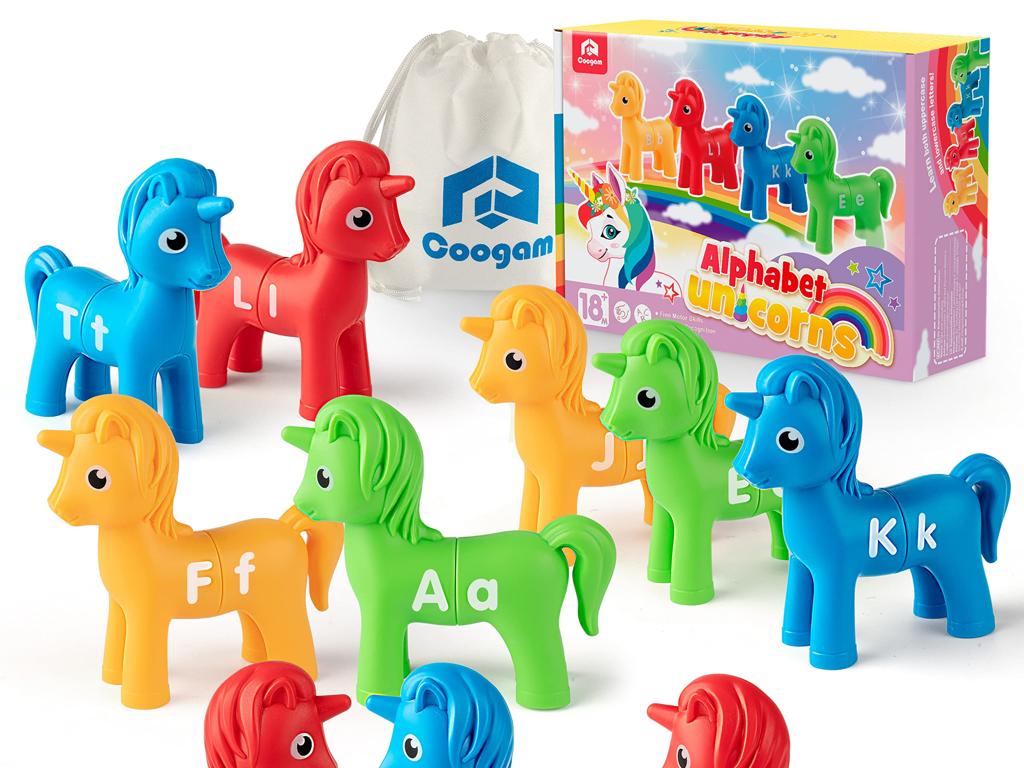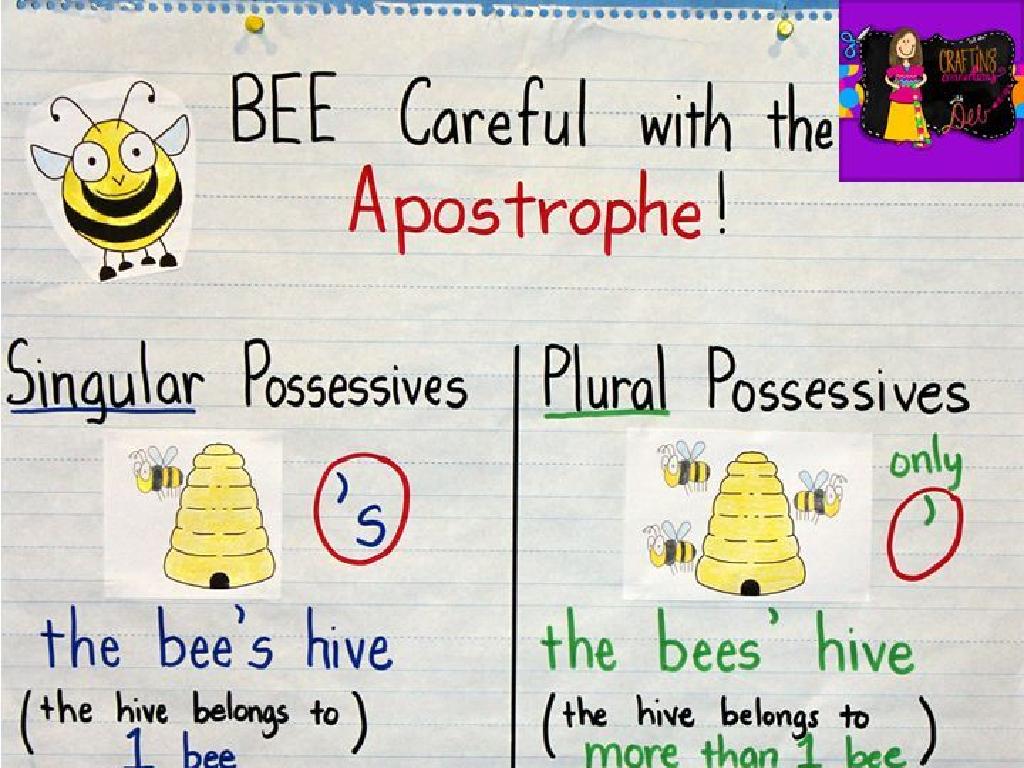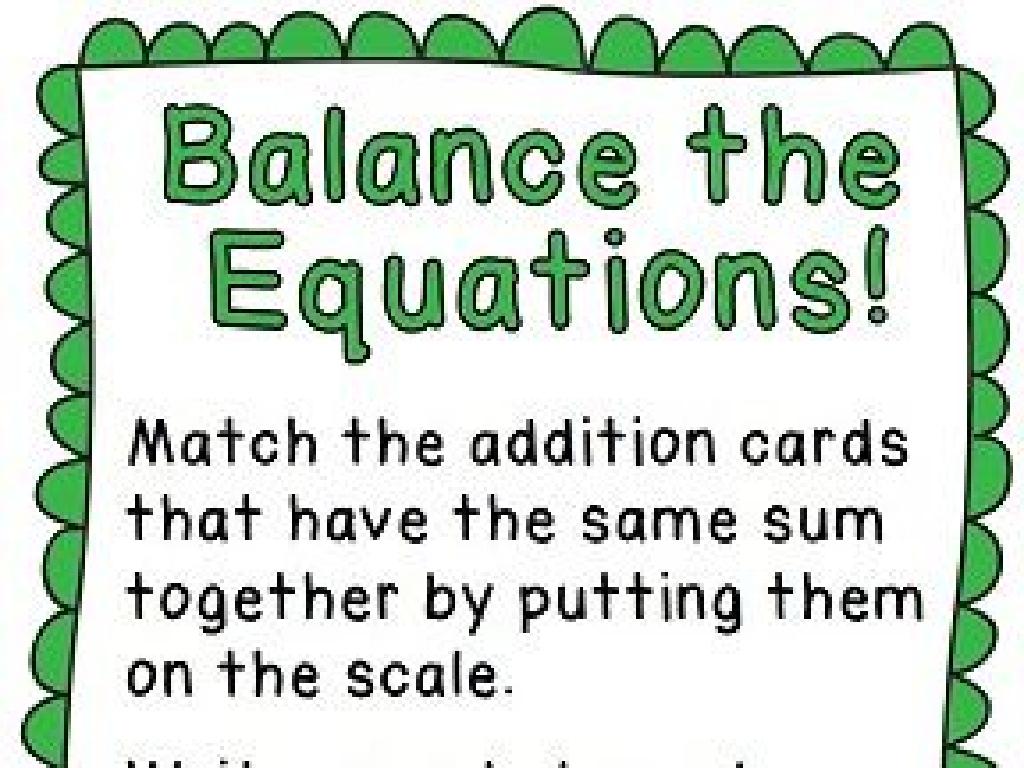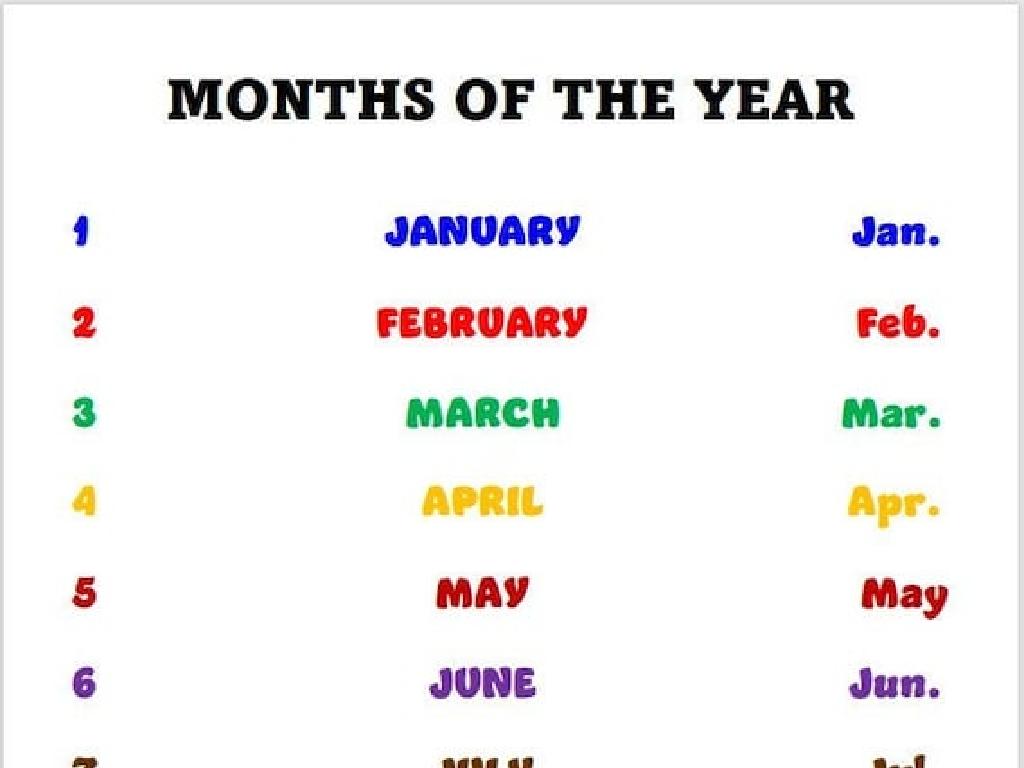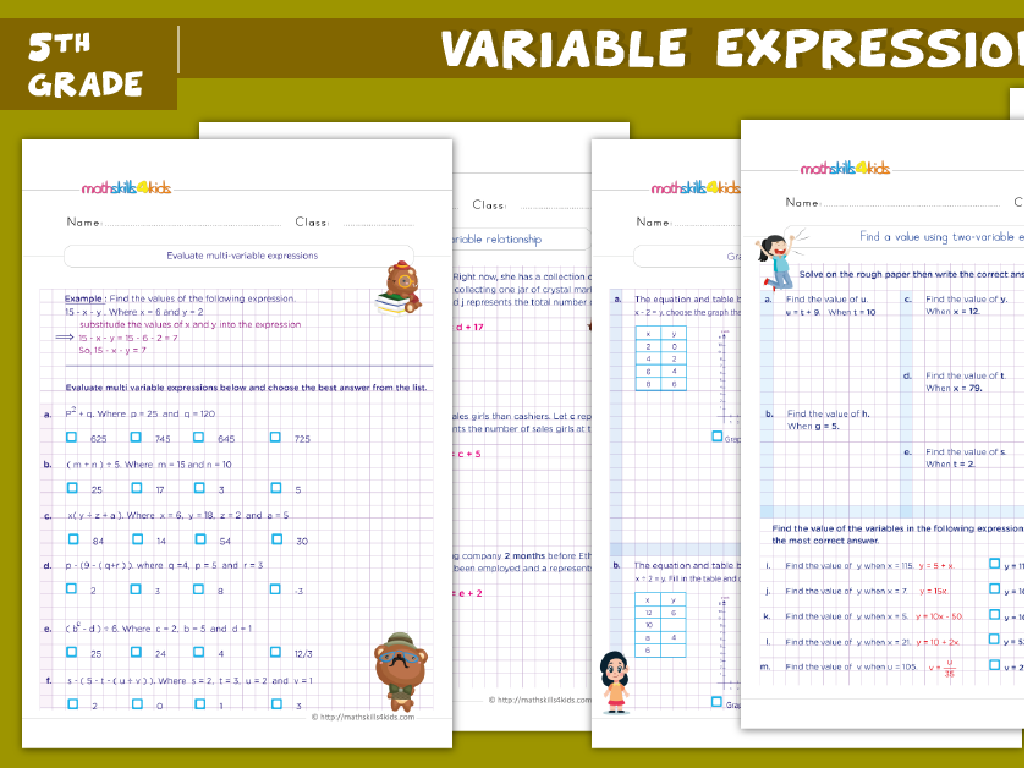Inference And Analysis
Subject: Language arts
Grade: Second grade
Topic: Sequence
Please LOG IN to download the presentation. Access is available to registered users only.
View More Content
Introduction to Inference: Be a Reading Detective
– What is inference?
– Inference is like using clues to solve a mystery, but with stories.
– Become a reading detective
– Imagine you’re a detective trying to figure out a story’s secrets.
– Use clues in stories
– Look for words or pictures that help you understand what’s not directly said.
– Practice makes perfect
|
This slide introduces the concept of inference as a critical reading skill. Explain to the students that making inferences is like being a detective, where they use clues from the text and their own knowledge to ‘solve’ the meaning behind the story. Emphasize that authors often leave hints or clues (context clues) that we need to look for to understand the story better. Encourage the students to think about the ‘whys’ and ‘hows’ of different scenarios in the stories they read. Provide examples of common clues, such as a character’s actions or feelings, and how they can help us infer what the author is trying to tell us without stating it outright. Practice with simple examples and gradually increase complexity as students become more comfortable with the concept.
Understanding Sequence in Stories
– What is sequence?
– Sequence is the order in which things happen.
– Importance of sequence in stories
– Helps us understand the beginning, middle, and end of a story.
– Sequence in daily life
– Like getting ready for school: wake up, brush teeth, eat breakfast, go to school.
– Practice finding sequences
– We’ll sequence events from a story together!
|
This slide introduces the concept of sequence to second graders, emphasizing its role in storytelling and daily life. Begin by explaining that sequence is the order in which events occur, using simple terms. Highlight why understanding sequence is crucial for comprehending the plot of a story, as it helps us follow the narrative from start to finish. Provide relatable examples, such as their morning routine, to illustrate sequence in a context they are familiar with. Conclude with an interactive activity where students can practice arranging events from a story in the correct order, reinforcing the lesson and engaging them in the learning process.
Making Inferences: Reading Between the Lines
– Learn to make inferences
– Inferences are smart guesses based on clues
– Use clues in the text
– Words or phrases in a story that hint at the meaning
– Practice with a picture
– Look at an image and guess what’s happening
– Discuss our inferences
|
This slide introduces the concept of making inferences, a critical reading comprehension skill. Inferences are like detective work, where students use clues from the text to understand what’s not directly stated. Start by explaining that an inference is a logical guess based on evidence. Show how to spot clues within a story that help us infer what the author is implying. Use a picture as a fun activity to practice making inferences, asking students to describe what might be happening and why they think so. Encourage discussion and validate all reasonable inferences to foster a supportive learning environment.
Understanding Sequence in Stories
– Identify story’s beginning, middle, end
– Sequence’s role in comprehension
– Sequence helps us follow the plot and predict what might happen next.
– Activity: Arrange story events
– Cut out sentences from a story and mix them up. Have students put them in order.
– Discuss how sequence aids understanding
|
This slide introduces the concept of sequence in storytelling to second-grade students. Begin by explaining that stories have a beginning, where the setting and characters are introduced; a middle, where the main events happen; and an end, where the story concludes. Emphasize how understanding the sequence of events helps us to comprehend the story better and predict future events. For the activity, provide students with sentences or pictures from a familiar story, mixed up, and ask them to arrange them in the correct order. This hands-on activity will reinforce their understanding of sequence and its importance in storytelling. After the activity, have a discussion about how arranging the events helped them understand the story better.
Analyzing a Story: Finding Patterns
– Understanding story analysis
– Analysis means studying parts to understand the whole story.
– Discovering patterns in stories
– Patterns could be in characters’ actions or events.
– Engage in group discussion
– Share patterns found in a story
– Discuss the sequence of events and what they tell us.
|
This slide introduces the concept of analyzing a story by looking for patterns, which is a key part of understanding sequence in narratives. Begin by explaining what it means to analyze a story: examining different parts like characters, settings, and events to understand the story better. Encourage students to think about patterns they might find in stories, such as repeated events or character behaviors. During group discussions, guide students to talk about a specific story and identify any patterns they notice. This activity helps students practice inference and analysis by connecting story elements and understanding their significance in the sequence of events. Make sure to provide examples of patterns, such as how a character might always do something special when they’re happy, to help students grasp the concept.
Class Activity: Let’s Be Detectives!
– Receive a story strip each
– Collaborate to sequence the strips
– Make inferences about the story
– Use clues in the story to guess what’s happening
– Discuss as a class afterwards
|
In this activity, students will practice the skill of making inferences, a key component of reading comprehension. Each group will be given a series of story strips that they must arrange in the correct order. Once the sequence is established, they will use the information from the strips and their own reasoning to infer what is happening in the story. This exercise encourages teamwork, critical thinking, and the use of context clues to understand a narrative. After the activity, facilitate a class discussion where each group shares their inferences and the clues that led them to those conclusions. This will help students learn from each other and understand different perspectives. Provide guidance and support as needed during the activity.
Wrapping Up: Inference & Sequence
– Recap: Inference & Sequence
– We reviewed how to guess what comes next in stories.
– Importance of these skills
– Helps us understand stories and predict endings.
– Celebrating our detective work
– You all did amazing finding clues in stories!
|
As we conclude today’s lesson, we’ll revisit the key concepts of inference and sequence. It’s crucial for students to understand that inference allows them to use clues from the text to make educated guesses, while understanding sequence helps them follow the order of events in a story. These skills are important for reading comprehension and will aid them in other subjects as well. Celebrate the students’ efforts in becoming little detectives throughout the lesson, making it fun and acknowledging their hard work. Encourage them to continue practicing these skills at home by reading with their families and predicting what might happen next in their favorite stories.
Homework: Inference & Story Sequencing
– Take home your activity sheet
– Practice inferring with a story
– Use clues in the text to guess what’s happening
– Draw a story sequence chart
– Show the order of events in the story
– Share your chart next class
|
This homework assignment is designed to reinforce the concepts of inference and understanding sequence in stories. Students will take home an activity sheet that guides them through a short story. They are to practice making inferences, which means using clues from the text to understand what is not directly stated. After reading, they should draw a sequence chart, which is a visual representation of the order of events in the story. This exercise will help them to comprehend the structure of narratives. In the next class, students will have the opportunity to share their sequence charts and discuss the inferences they made, allowing for collaborative learning and reinforcing the lesson.

